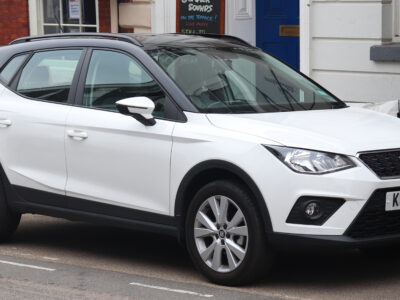
Seat Arona Cambelt Change — The Complete 2025 Guide
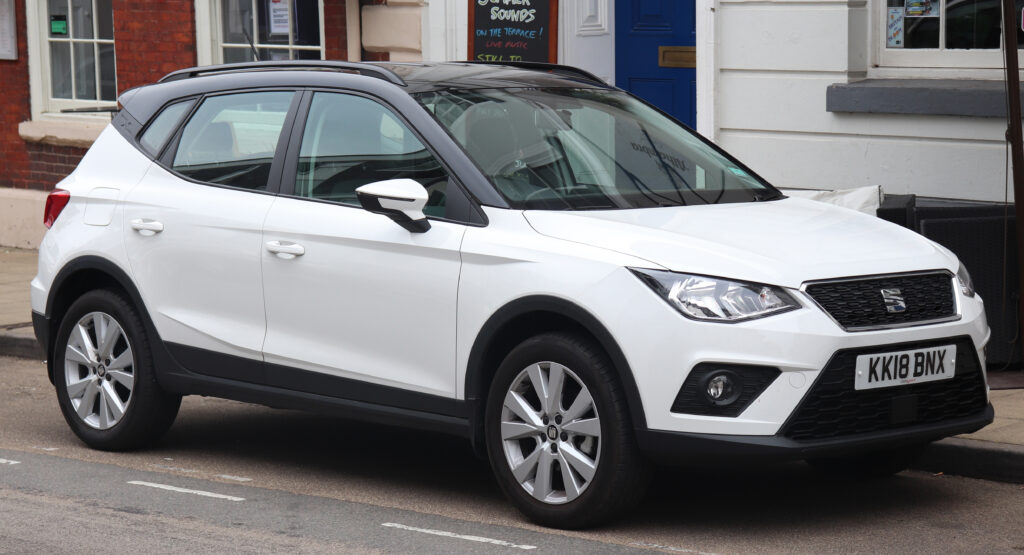
- Understanding the Cambelt on the SEAT Arona
- Why the Cambelt Matters More Than You Think
- Does the SEAT Arona Have a Cambelt or Timing Chain?
- SEAT Arona Cambelt Change Interval
- Symptoms Your SEAT Arona Cambelt May Need Replacing
- SEAT Arona Cambelt Replacement Cost (UK 2025)
- Why Some Arona Owners Replace the Cambelt Earlier
- DIY SEAT Arona Cambelt Change — Should You Attempt It?
- Cambelt Replacement Procedure (Simplified Overview)
- What Happens If the Cambelt Breaks?
- Is There a Recall for SEAT Arona Cambelt Issues?
- Cambelt vs Timing Chain: Why Belts Still Exist
- Should You Trust “Lifetime Belts”?
- How to Know If Your Cambelt Was Actually Changed
- Best Cambelt Brands for SEAT Arona
- How Long Does a Cambelt Last After Replacement?
- Final Thoughts: Cambelt Peace of Mind
- FAQs — SEAT Arona Cambelt Change
Understanding the Cambelt on the SEAT Arona
Let’s be real: few car maintenance jobs feel as intimidating as a cambelt change. It’s one of those repairs we know we must do, even if we wish it didn’t exist. And if you’re driving a SEAT Arona—especially one with the beloved but finicky VW-group engines—knowing exactly when and how to handle a cambelt replacement can save you thousands of pounds and a world of stress.
In this guide, we walk through everything you need to know about the SEAT Arona cambelt change: intervals, symptoms, costs, DIY practicality, risks, and whether timing chains affect you. We keep things relaxed, human, and packed with practical value—because that’s how car care should be.
Why the Cambelt Matters More Than You Think
The cambelt (also called the timing belt) keeps your engine’s internal symphony perfectly in sync. One tiny slip and the pistons can collide with valves, causing catastrophic, wallet-draining damage.
Think of the cambelt as the conductor of your engine’s orchestra. When it breaks, the entire performance ends in chaos.
Does the SEAT Arona Have a Cambelt or Timing Chain?
The SEAT Arona comes with several petrol and diesel engines across its lifespan. Here’s the breakdown:
Petrol Engines
- 1.0 TSI (95 & 115 hp) — Timing belt (cambelt)
- 1.5 TSI (150 hp) — Timing belt (cambelt)
Diesel Engines
- 1.6 TDI — Timing belt (cambelt)
Hybrid/Eco Versions
- Not applicable for the Arona.
Conclusion:
Every SEAT Arona currently sold uses a cambelt—not a chain. So cambelt maintenance is a must for every owner.
SEAT Arona Cambelt Change Interval
This is where it gets tricky, because VW Group has changed its recommendations over the years.
General Rule for SEAT Arona Cambelt Interval
- Every 5 years or 60,000 miles (96,000 km)
— whichever comes first.
Why the Interval Matters
Even if you barely drive the car, rubber degrades over time. Cracks form. Teeth weaken. The belt becomes brittle. And once it snaps? Let’s just say your engine won’t feel very lucky.
Symptoms Your SEAT Arona Cambelt May Need Replacing
The cambelt itself usually doesn’t give many warning signs before failing—another reason intervals matter. But related components often whisper hints.
Common Warning Signs
- Ticking or clicking noise from engine bay
- Rough idling
- Misfires
- Oil leaks around timing cover
- Engine struggles to start
- Visible wear if inspected manually
- Increased vibration
- “Check Engine” light
If You Notice ANY of These…
Stop driving and get the belt inspected immediately. You’ll thank yourself later.
SEAT Arona Cambelt Replacement Cost (UK 2025)
Let’s break down what you can expect to pay in a typical UK garage.
Cambelt Change Price
- Independent garage: £420–£550
- SEAT main dealer: £650–£850
Cambelt + Water Pump Package
Most mechanics recommend replacing both together, since the water pump is driven by the same belt.
- Independent garage: £480–£650
- SEAT main dealer: £700–£950
Why Replace the Water Pump?
- It’s easily accessible during the job
- If it fails later, the labour cost doubles
- Saves long-term maintenance headaches
Labour Breakdown
- 3–4 hours of labour
- £60–£120/hr depending on location
Why Some Arona Owners Replace the Cambelt Earlier
Not all driving styles are equal. In these cases, early replacement makes perfect sense:
You may be interested in reading SEAT Arona Fuel Tank Capacity Guide (2017–2024)
SEAT Arona Fuel Tank Capacity Guide (2017–2024)Replace Early If You Frequently:
- Drive short trips
- Sit in heavy city traffic
- Tow trailers
- Drive in dusty environments
- Notice oil leaks near the belt housing
Rule of Thumb
Heavy usage? Consider 40,000–50,000 miles instead of 60,000.
DIY SEAT Arona Cambelt Change — Should You Attempt It?
Technically yes. Practically? Only if you:
- Have intermediate-to-advanced mechanical skill
- Own the necessary locking tools
- Have torque wrenches
- Have access to a safe workspace
- Are comfortable with engine synchronisation
Why This Job Is Risky
A tiny misalignment of the camshaft or crankshaft can destroy the engine. DIY saves money but raises stakes dramatically.
We Recommend DIY Only If:
- You’ve done cambelts before
- You trust your skills under pressure
- You’re prepared to double-check every step
Cambelt Replacement Procedure (Simplified Overview)
Here’s a structured, easy-to-follow outline of the typical process.
1. Preparatory Steps
- Disconnect battery
- Remove engine cover
- Lift vehicle if needed
- Remove wheel arch liner (depending on engine)
2. Access the Timing Cover
- Remove accessory belt
- Remove crank pulley
- Remove plastic timing cover
3. Lock the Timing Components
- Set engine to TDC (Top Dead Centre)
- Insert locking pins for camshaft & crankshaft
- Double-check alignment marks
4. Remove Old Belt
- Loosen tensioner
- Remove belt
- Inspect pulleys
5. Install New Belt
- Fit belt around pulleys
- Tension belt correctly
- Rotate engine manually twice
- Recheck alignment pins
6. Reassemble
- Fit timing cover
- Reinstall crank pulley
- Refit accessory belt
- Install wheel arch liner and engine cover
7. Final Checks
- Start engine
- Listen for abnormal noises
- Scan for OBD errors
What Happens If the Cambelt Breaks?
This is where things can get scary.
Expected Damage
- Bent valves
- Destroyed pistons
- Damaged camshaft
- Possible cylinder head replacement
- Potential complete engine replacement
Repair Cost
- £1,200–£3,500+, depending on damage
This is why cambelt maintenance is one of the most cost-effective decisions an Arona owner can make.
Is There a Recall for SEAT Arona Cambelt Issues?
As of 2025, there are no major UK recalls specifically targeting the Arona’s cambelt.
However:
- Some related recalls exist for water pumps
- Certain early 1.0 TSI engines had tensioner-related revisions
Check your VIN using SEAT’s official recall checker.
Cambelt vs Timing Chain: Why Belts Still Exist
If belts fail catastrophically, why not use chains?
Reasons Carmakers Still Use Belts
- Quieter operation
- Lower weight
- Lower friction = better fuel economy
- Cheaper manufacturing
- Easier to lubricate and replace
Belts aren’t inferior—they’re just a different engineering philosophy.
Should You Trust “Lifetime Belts”?
Some modern VW engines advertise extended intervals. The Arona? Not so much.
Reasons You Should Ignore Lifetime Claims
- Real-world driving varies
- Rubber deteriorates
- Components like tensioners still age
- Oil leaks shorten belt life
- Heat cycles weaken material
Stick to 5 years / 60k miles and sleep peacefully.
You may be interested in reading SEAT Arona Fuel Tank Capacity Guide (2017–2024)
SEAT Arona Fuel Tank Capacity Guide (2017–2024)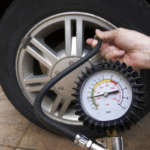 SEAT Arona Tyre Pressure Chart
SEAT Arona Tyre Pressure ChartHow to Know If Your Cambelt Was Actually Changed
Sadly, not all garages are honest. Here’s how to verify:
Signs the Job Was Properly Done
- Sticker under the bonnet showing date & mileage
- New tensioner sounds smoother
- Water pump looks clean/new
- Timing cover shows fresh sealant
- Invoices list part numbers
- Engine runs quietly without rattles or ticks
Ask Your Garage For:
- Old belt (to inspect wear)
- Photos of the job
- Brand of replacement kit
- Warranty details
Best Cambelt Brands for SEAT Arona
Quality parts matter. Stick with OEM-level manufacturers.
Recommended Brands
- Gates (often OEM)
- Continental ContiTech
- Dayco
- INA (tensioners/pulleys)
Avoid cheap eBay kits—they’re a ticking time bomb.
How Long Does a Cambelt Last After Replacement?
With proper installation and decent driving conditions:
- 5 years minimum
- 60,000 miles average
- Up to 70,000 miles with gentle motorway use
But don’t push your luck. Failure isn’t worth the gamble.
Final Thoughts: Cambelt Peace of Mind
Owning a SEAT Arona is easy—fuel-efficient, reliable, stylish, and practical. But the cambelt? That’s the one area where you shouldn’t cut corners.
A timely cambelt change keeps your engine healthy, protects your investment, and ensures you’re not left standing by the roadside Googling “engine rebuild cost SEAT Arona.”
Do it on schedule, keep good records, and your Arona will reward you with years of dependable driving.
FAQs — SEAT Arona Cambelt Change
1. How often should I change the cambelt on a SEAT Arona?
Every 5 years or 60,000 miles, whichever comes first.
2. Does every SEAT Arona engine use a cambelt?
Yes, all current petrol and diesel engines use timing belts—not chains.
3. Should I replace the water pump with the cambelt?
Absolutely. It’s cost-effective, smart, and standard practice.
4. Can I drive if my cambelt is overdue?
You can—but you shouldn’t. It’s like gambling your entire engine on a weak rubber band.
5. How much does a cambelt change cost?
Typically £480–£850 depending on location and whether it's a dealer or independent garage.
You may be interested in reading SEAT Arona Fuel Tank Capacity Guide (2017–2024)
SEAT Arona Fuel Tank Capacity Guide (2017–2024) SEAT Arona Tyre Pressure Chart
SEAT Arona Tyre Pressure Chart SEAT Arona Key Battery Replacement – The Complete 2025 Guide
SEAT Arona Key Battery Replacement – The Complete 2025 GuideIf you want to know other articles similar to Seat Arona Cambelt Change — The Complete 2025 Guide you can visit the category Service and Parts.
Deja una respuesta

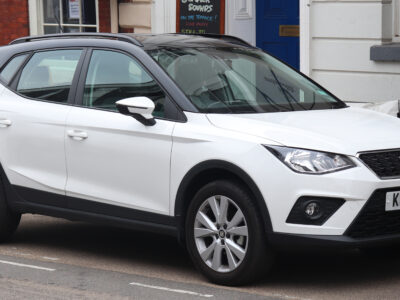



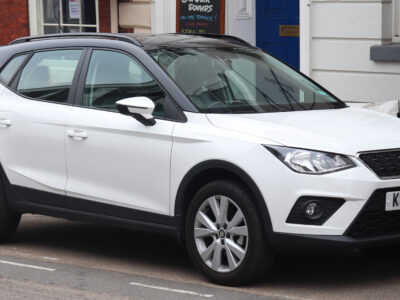
More content of your interest